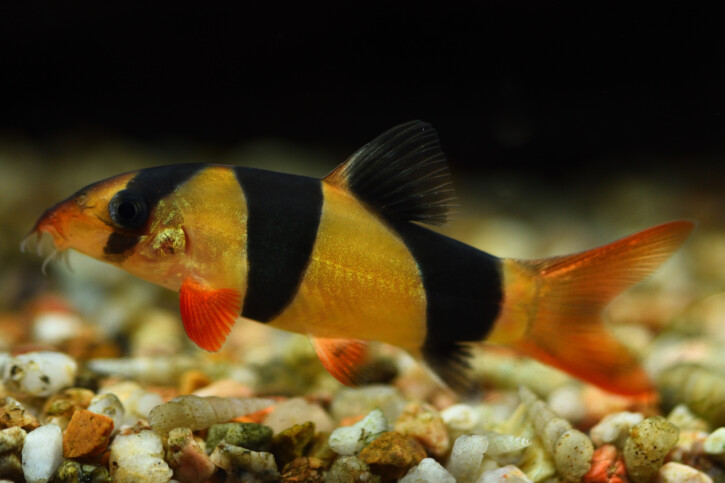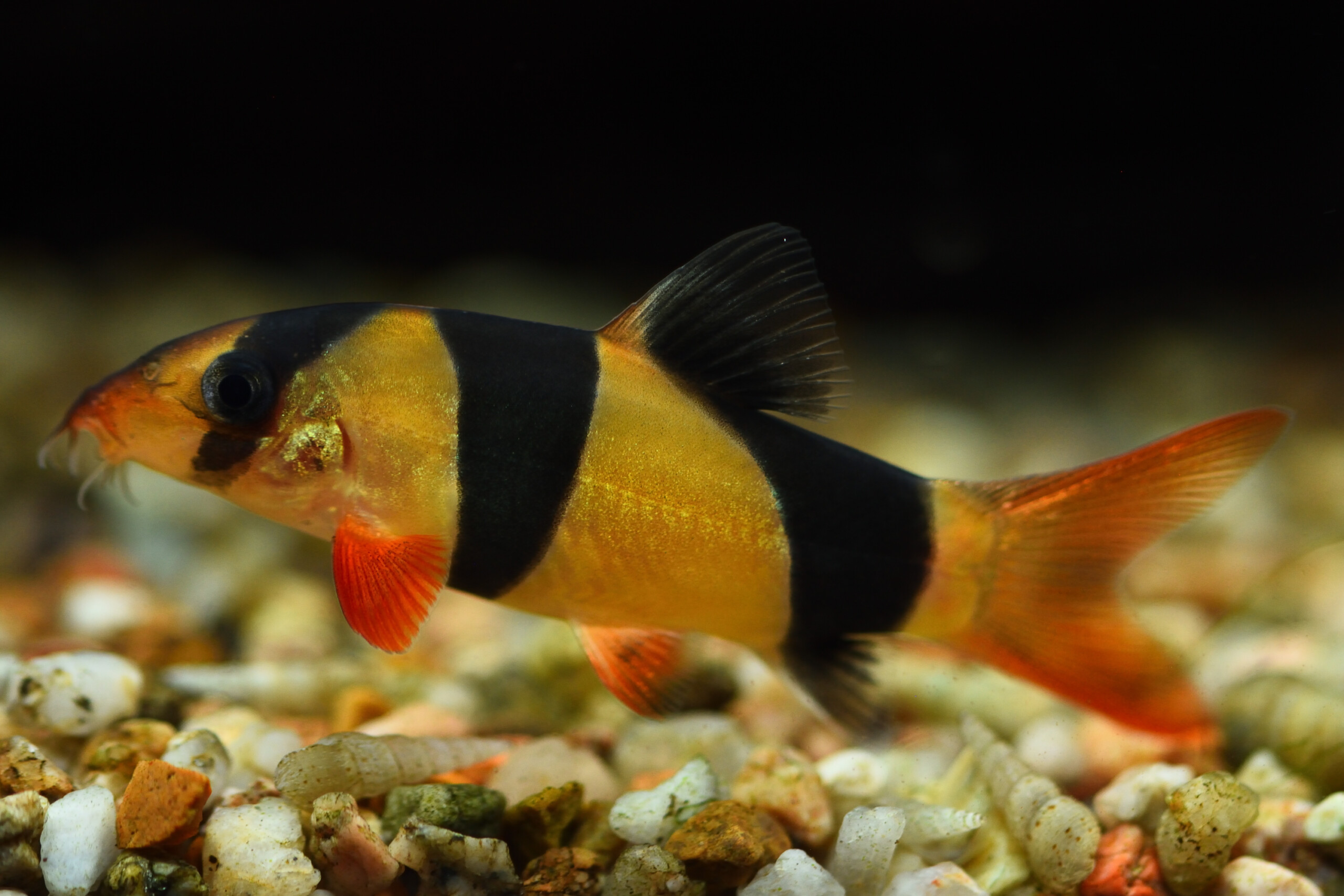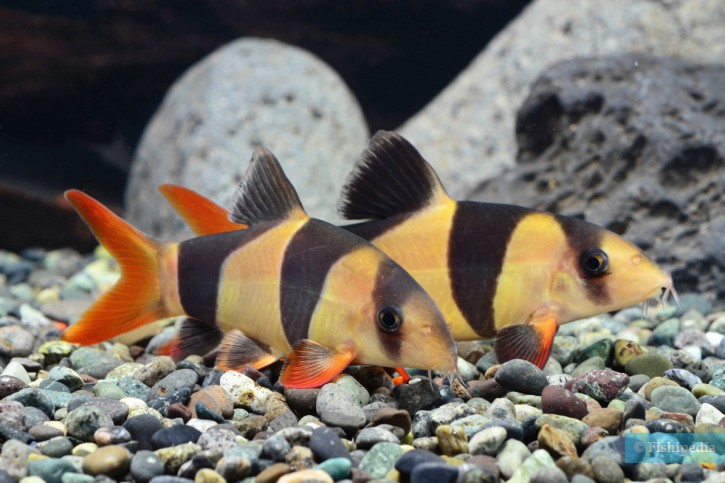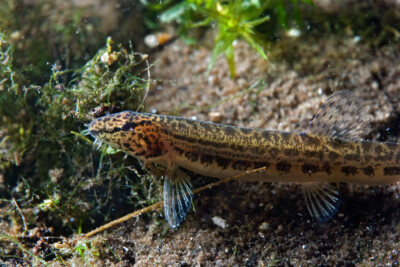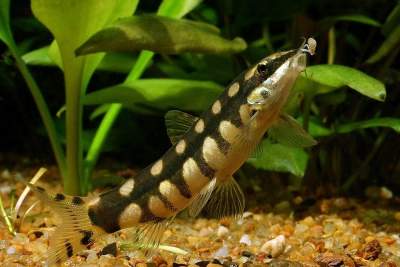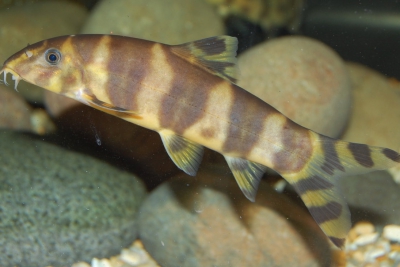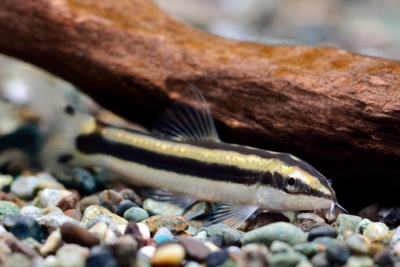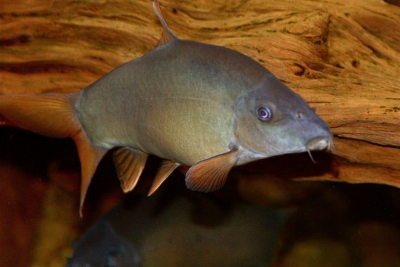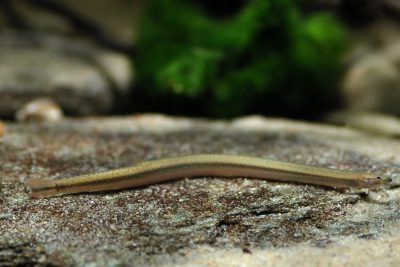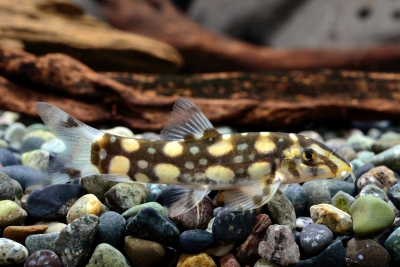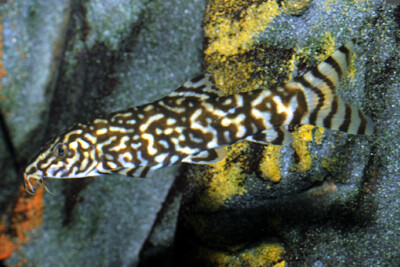Introduction
Chromobotia macracanthus, usually called Clown loach or Tiger botia, is a tropical fish native to Asia. Although no official alert has been launched at this stage, populations have been strongly affected for years by deforestation and fishing for the aquarium trade.
Who is it?
Genus Chromobotia
Morphology
-
Type
-
Average size15 cm
-
Maximum size30 cm
-
Longevity20 year
-
Patternvertical stripes
-
Type
-
Average size15 cm
-
Maximum size30 cm
-
Longevity20 year
-
Patternvertical stripes
How to recognize This fish ?
The largest specimen observed to date measured 305 mm and weighed 469 grams. He was captured in the Musi River in Sumatra.
Sexual dimorphism
There is no visible dimorphism.
Behaviour & Life cycle
-
dietomnivorous with carnivorous tendency
-
Sociabilitygregarious
-
territorialNo
-
Way of livingdiurnal
The Clown loach is a fish living in scattered groups. Adults are mainly found in the bottom of rivers and canals. They are sometimes found hidden under rocks, in submerged woods or in holes in the mud.
Juveniles are found in flood plains. These fish have a predominantly carnivorous diet, hunting benthic insects and aquatic snails. They also eat vegetables to complete this diet.
Reproduction
-
Reproductionovipare qui pond sur substrat découvert
-
Migratory speciesYes
The Clown loach is an oviparous fish that lay on an exposed substrate. In the wild, it is a migratory fish that reproduces in rivers before reaching the bed of more imposing rivers. Breeding in captivity is difficult.
Harmless species
This species does not represent any particular threats to humans when encountered in its natural environment.
Origin and distribution
Geographic distribution & Conservation
Until the 2000s, there was no direct signal on the state of health of wild populations. However, a study published in 2012 reports a complicated situation.
Clown loach stocks are now seriously threatened in the wild. The collection of wild juveniles is considered to be far too intensive. The number of catches increased from 20 million individuals per year at the end of the 1990s to 50 million in the year alone of 2009. This number is not viable in the short term.
In addition to commercial overexploitation, several Indonesian rivers, many of which are where clown loach are located, suffer from pollution associated with human activities, such as gold panning. These areas are also largely transformed by deforestation. The primary forest is replaced by palm and rubber plantations.
Unfortunately, efforts made in recent years to breed these captive fish have largely failed. As demand does not cease, if no alternative to overfishing is found, the species risks disappearing.
Conservation status of populations (IUCN)
What is its habitat?
Natural environment characteristics
-
Temperature22 - 30 °C
-
pH (acidity)5 - 7
-
gh (hardness)5 - 12
-
FlowMedium
Biotope presentation
Due to their migration for reproduction, clown loach frequent a wide variety of environments, generally in rivers. These experience significant variations throughout the year, both in terms of flow and depth and in terms of water parameters (T °, pH).
The older individuals live in the deeper areas, the younger ones staying in smaller rivers.
The vegetation is normally dense and thick, the marshy waters being bordered by tropical forests. The substrate is mainly composed of humus (various plant detritus) and leaves, with the presence of submerged roots and trunks. The water is tea colored, quite acidic.
Fishkeeping
Not recommended
We do not recommend keeping this species in an aquarium. It has unpredictable needs which, if not met, generate significant stress, potentially leading to a shorter life expectancy, an interruption of its growth or the development of pathogens.
To go further
Sources & Contributions
Participation & Validation
The Fishipedia team and specialist contributors are committed to providing high-quality content. However, although the information comes from scientific sources or testimonials from specialists, the cards may contain inaccuracies.

Benoit Chartrer
Translation
Translation done with the valuable contribution of our translators, who make this information available to a wider audience. We sincerely thank them for their commitment.
Bibliographic references
- - GBIF
- - Biology and culture of the clown loach Chromobotia macracanthus (Cypriniformes, Cobitidae): 1- Hormonal induced breeding, unusual latency response and egg production in two populations from Sumatra and Borneo Islands - Marc Legendre - Darti Satyani - Siti Subandiyah - Sudarto - Laurent Pouyaud - Etienne Baras - Jacques Slembrouck - Aquat. Living Resour. - 2012.
- - Botia kubotai, a new species of loach (Teleostei: Cobitidae) from the Ataran River basin (Myanmar), with comments on botiine nomenclature and diagnosis of a new genus - Maurice Kottelat - ZOOTAXA - 2004.
Scientific partners
Tags
Species of the same family
